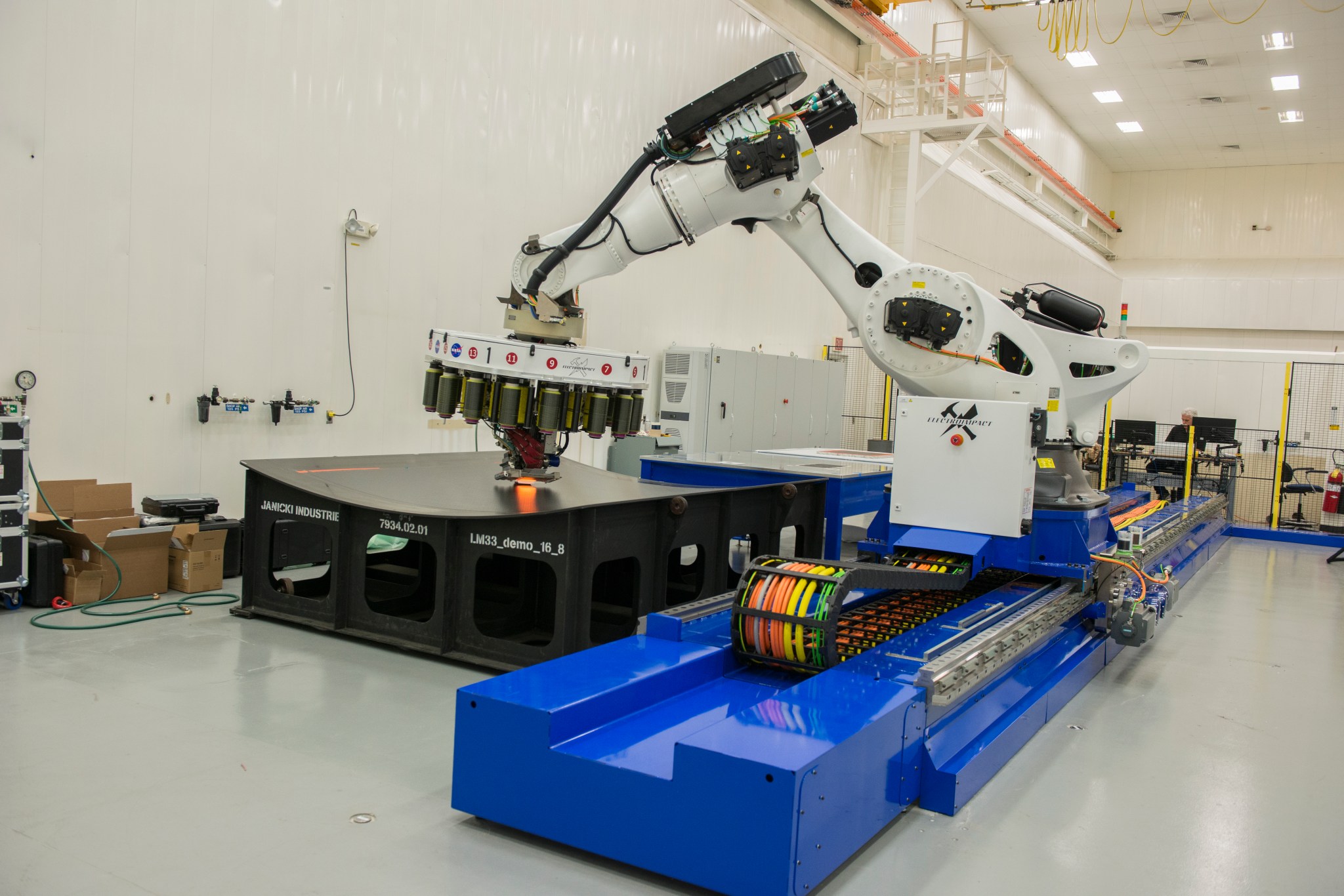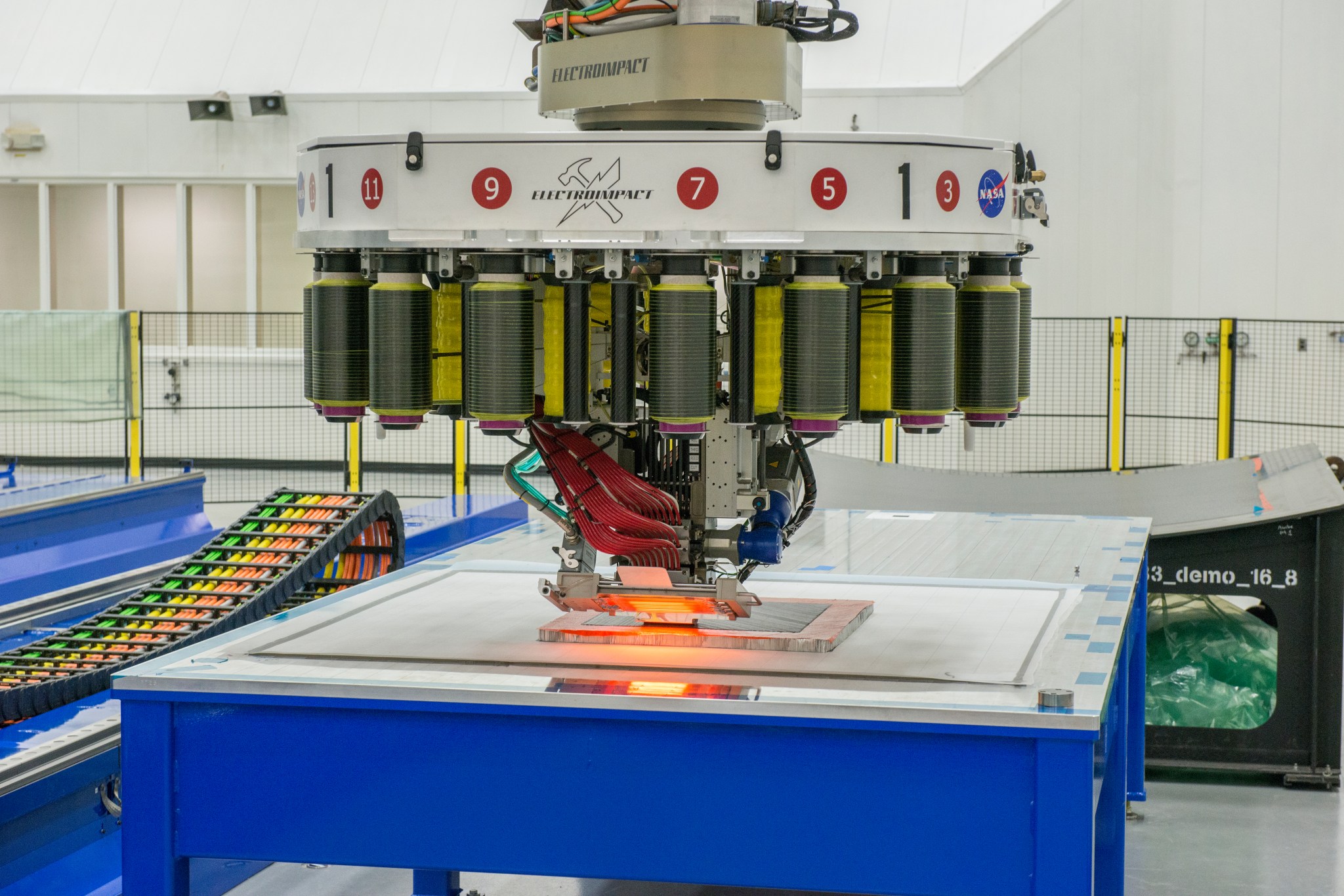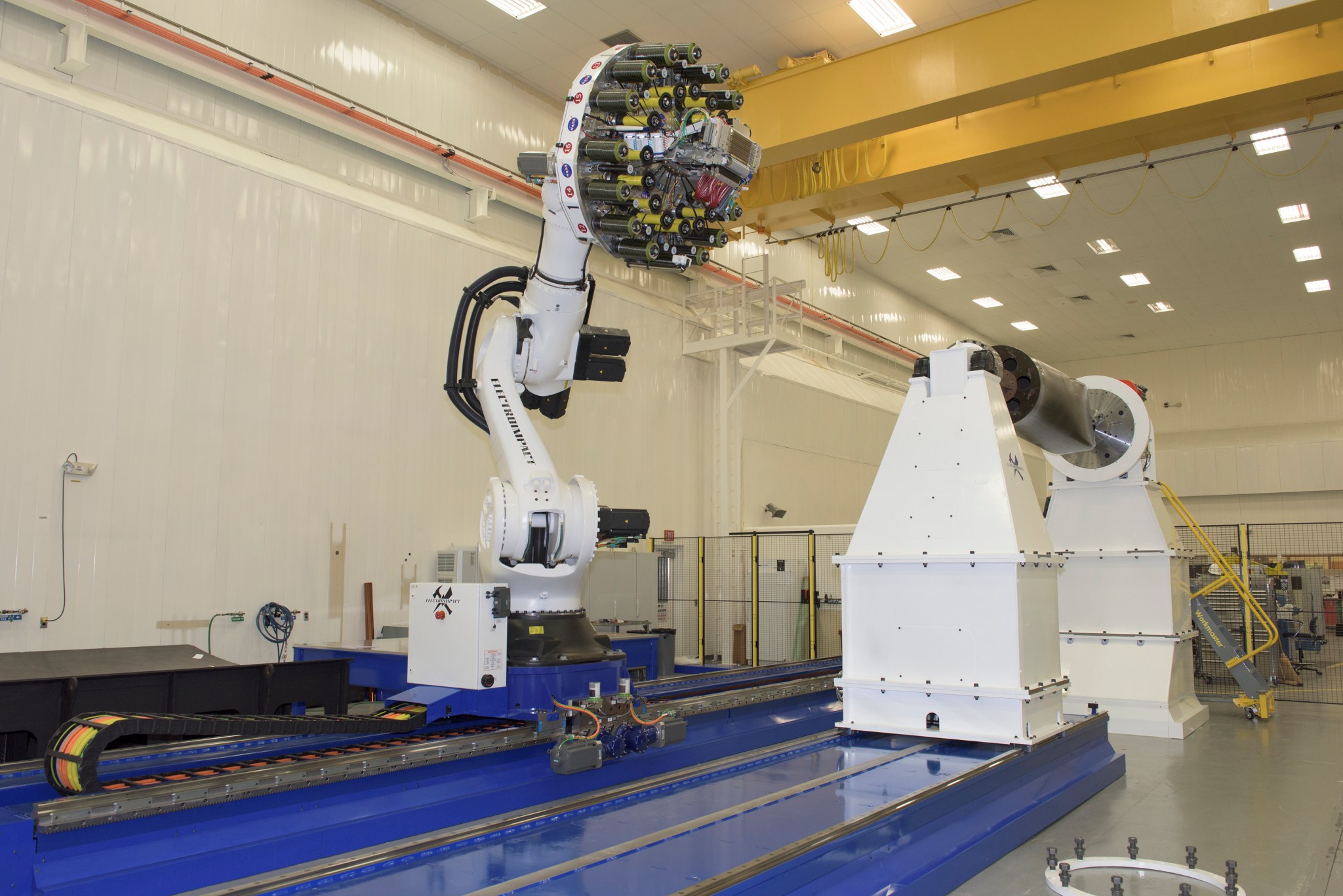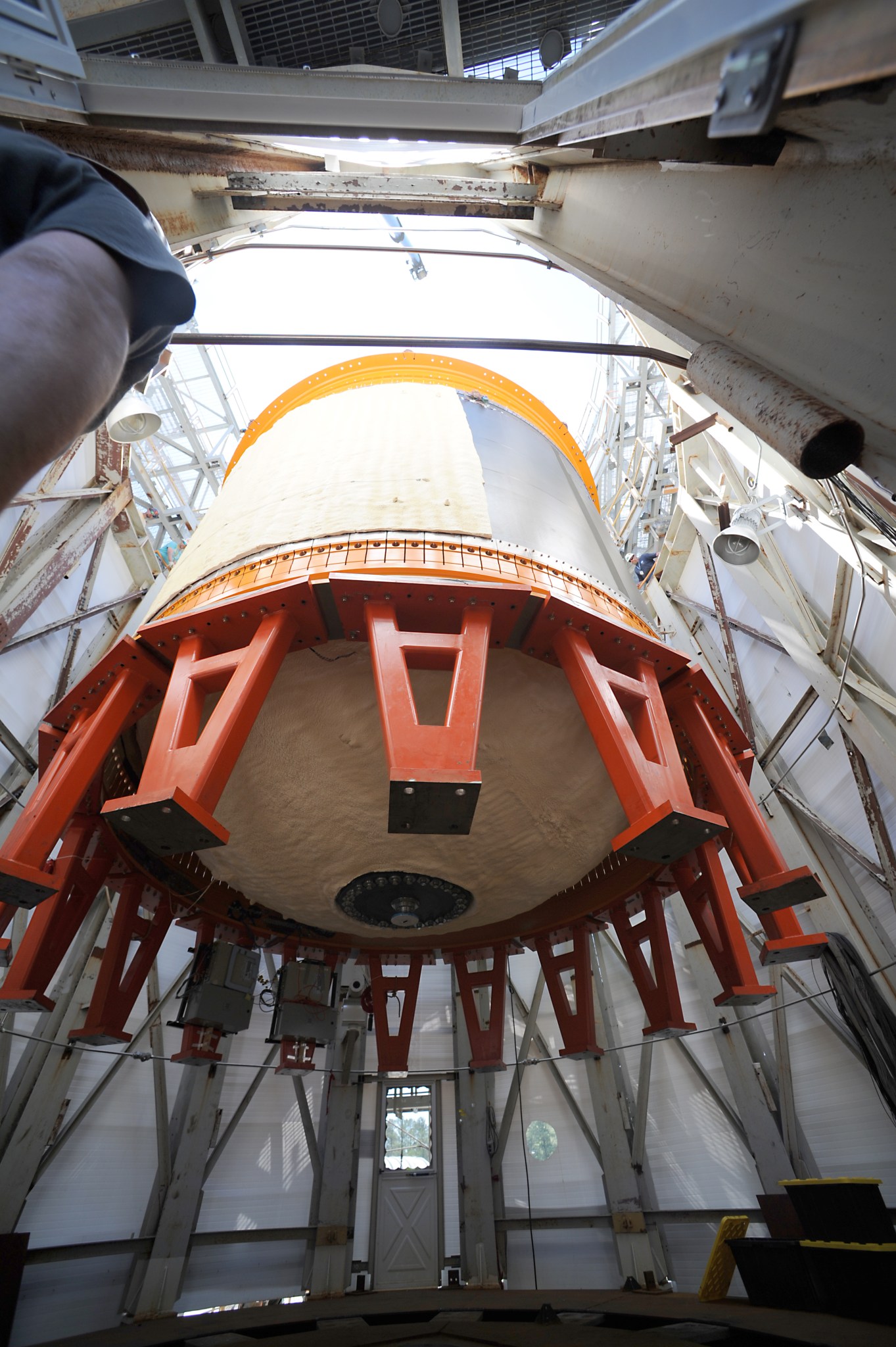A titan now resides at NASA’s Marshall Space Flight Center in Huntsville, Alabama. This titan is no Greek god, but one of the largest composites manufacturing robots created in America, and it will help NASA build the biggest, lightweight composite parts ever made for space vehicles.
“Marshall has been investing in composites for a long time,” said Preston Jones, deputy director of Marshall’s Engineering Directorate. “This addition to Marshall’s Composites Technology Center provides modern technology to develop low-cost and high-speed manufacturing processes for making large composite rocket structures. We will build and test these structures to determine if they are a good fit for space vehicles that will carry humans on exploration missions to Mars and other places.”
It takes a myriad of different materials to build a space vehicle like NASA’s new Space Launch System, a heavy-lift rocket designed to take explorers on deep space missions. The lighter the rocket, the more payload–crew, science instruments, food, equipment, and habitats–the rocket can carry to space. Lightweight composites have the potential to increase the amount of payload that can be carried by a rocket along with lowering its total production cost. NASA is conducting composites manufacturing technology development and demonstration projects to determine whether composites can be part of the evolved Space Launch System and other exploration spacecraft, such as landers, rovers, and habitats.
“The robot will build structures larger than 8 meters, or 26 feet, in diameter, some of the largest composite structures ever constructed for space vehicles, “said Justin Jackson, the Marshall materials engineer who installed and checked out the robot and who helped build and test one of the largest composite rocket fuel tanks ever made. “Composite manufacturing has advanced tremendously in the last few years, and NASA is using this industrial automated fiber placement tool in new ways to advance space exploration. Marshall’s investment in this robot will help mature composites manufacturing technology that may lead to more affordable space vehicles.”
The robot travelled across the country from Electroimpact, Inc., in Mukilteo, Washington. Electroimpact engineers worked with Marshall engineers to customize the robot and supporting software for building large space structures. The robot is mounted on a 40-foot-long track in Marshall’s Composites Technology Center that is part of NASA’s National Center for Advanced Manufacturing. This center already has support infrastructure necessary for composite manufacturing: large autoclaves, curing chambers, test facilities, and digital analysis systems.

To make large composite structures, the robot travels on a track, and a head at the end of its 21-foot robot arm articulates in multiple directions. The head can hold up to 16 spools of carbon fibers that look like pieces of tape and are as thin as human hairs. The robot places the fibers onto a tooling surface in precise patterns to form different large structures of varying shapes and sizes. In what looks like an elaborate dance, the tooling surface holds the piece on a rotisserie-like system on a parallel track next to the robot. The robot head can be changed for different projects, which makes the system flexible and usable for various types of manufacturing.
The first project that the robot will tackle is making large composite structures for a Technology Demonstration Mission (TDM) program managed by Marshall for the Space Technology Mission Directorate. For the project, engineers will design, build, test and address flight certification of large composite structures similar to those that might be infused into upgrades for an evolved Space Launch System.
“These new robotic fiber placement tools are game changers because they can drastically reduce the cost and improve the quality of large space structures,” said John Vickers, the manager for NASA’s National Center for Advanced Manufacturing and the manager for the TDM composites project. “The automated digital capability aids in the design and development process and makes it more precise and efficient. This helps NASA meet the high reliability standards required to develop a process for building space vehicles that transport humans on deep space missions.”
The large structures built by the robot will be tested in nearby Marshall structural test stands where spaceflight conditions can be simulated.
“Composite materials are used across NASA projects for everything from aircraft to human space vehicles to planetary probes,” said Larry Pelham, a Marshall composites expert who is leading manufacturing operations with the robot. “Robotic systems allow NASA to support a variety of research and development from low technology readiness levels to high technology readiness levels where structures are ready for flight tests.”
NASA is a partner in the National/Interagency Advanced Manufacturing Initiative and will share its data with American companies to open up the marketplace for increased use of composites across a number of industries.





























